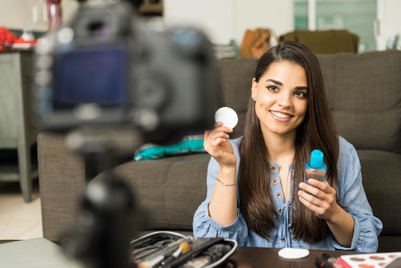
At CES 2016, connectivity was an outstanding theme that CMOs and CTOs must get their heads around to see significant success over the coming years. Almost every industry is set to be impacted by this trend—the connected car is shaking up the automotive industry, drones are impacting the logistics sector, our homes are becoming more connected, retail is being revolutionised with endless connectivity innovations, and our health and wellbeing will be vastly improved by the Internet of Things (IoT) monitoring our bodies and movements.
But if we’re brutally honest, for many CMOs and CTOs, CES is blue-sky thinking. So it’s fair to ask the question: what does connectivity mean for Asian marketers and consumers in 2016?
We have some impressive examples of connectivity already in place on this side of the globe. Here in Hong Kong, our Octopus cards provide a world-leading utility for Hong Kong consumers and visitors. Our Octopus cards facilitate cashless payments not only for transport, but for almost any type of retail purchase imaginable—from McDonalds to M&S—the ‘beep’ of our Octopus cards leaves a trail of data any marketer would give their right arm to have access to.
Our Octopus cards provide connectivity through a convenient payment system, but imagine if they were linked to our household appliances. CES provided some rich inspiration in this space, including the new Samsung smart fridge—ensuring households never run out of perishables (or no two family members buy the same groceries on the way home from work).
This data utilisation can also be transferred to sectors like hospitality. Asia offers the hospitality industry a unique opportunity. We are mad for eating out and are constantly cool-hunting for the latest restaurants and bars. The connected economy will allow for the hospitality industry to connect places to people and products.
Imagine a service that knows Wednesday is your date night. On Monday it proactively shares restaurant recommendations half way between your office and home. It can also organise a reservation, notify the restaurant of your VIP status and pre-book an Uber to collect you or your date from the office on Wednesday night. At 10.30pm it also shares venue suggestions for a nightcap or an offer to call an Uber and head home.
Asia’s retail sector is ripe for some of the exciting innovations showcased this year. Intel’s RealSense is a 3D scanner technology that can accurately map individual body shape to help you make perfect garment choices the first time. With retail rents so high in the region, this is a practical technology for those retailers wanting to reduce their footprints. It’s also a form of connectivity that promises to have drastic impact on retailer’s current 30 percent return rate due to clothes that don’t fit. RealSense is also being prototyped with gaming, allowing every gamer to create their own personal avatar, something that used to be the privilege of the few due to it high cost.
Across Asia, we were delighted with the CES announcement of Netflix launching in our part of the world. While the thought of juggling another entertainment source may seem daunting to some, in good news, CES taught us your Smart TV will also act as a smart hub, eliminating multiple remote controls and annoying switching between HDMI inputs. An integrated search also makes finding content easier—another great example of how things are smarter because they’re connected.
The human body even serves a role as transmitter of information. Advances in health monitoring will be ground breaking in markets like Hong Kong, where an ageing population casts a costly cloud for future governments. An FDA approved blood pressure monitor from Qualcomm takes persistent measurements from the user, offering a huge improvement on ad hoc or infrequent measurement taken in the doctor’s surgery. This type of sensor also facilitates continual monitoring of blood sugar levels for diabetics; wearable health measurement devices have taken a huge leap from non-essential accessories to government approved preventative monitoring technology that offer huge healthcare budget savings.
Existing initiatives like this one from Manulife could be vastly evolved using this technology, giving healthcare workers intercepting calls from the elderly some factual insight to know if the elderly person is in physical distress or needs some emotional support.
One important trend to note is the way non-competitive brands from different sectors are working together, rather than individually, to improve the customer experience. It’s clear to see the most preferred IoT customer experiences can no longer be successfully delivered by a single stand-alone brand—non-competitive brands must work together to ensure their individual offering works seamlessly and easily within the IoT ecosystem. Smart fridges must speak within the same system as grocery services. Retailers must connect with logistics services and consumer media. Healthcare services must be ready to process reams of data to serve their clientele. Cars must be linked to ensure safety measures can be affected to reduce accidents and incidents.
It’s a brave new world for many brands, especially those who may need to urgently tend to internal housekeeping in order to meet the needs of customers ready for the connected economy.
CES 2016 showed us that when things connect and share data they allow us make better decisions or provide a better customer experience. Brands can only participate in the connected economy if they work together. Further to this, business leaders must make the necessary changes within their organisations to facilitate data exchange.
 Seton Vermaak is head of strategy with Razorfish Hong Kong Seton Vermaak is head of strategy with Razorfish Hong Kong |


.jpg&h=334&w=500&q=100&v=20250320&c=1)

.jpg&h=334&w=500&q=100&v=20250320&c=1)

.jpg&h=334&w=500&q=100&v=20250320&c=1)



.png&h=334&w=500&q=100&v=20250320&c=1)







.png&h=268&w=401&q=100&v=20250320&c=1)
